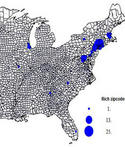There is an increasing recognition – at least outside the academy, planning organization and urban core developer groups – that the spatial expansion of cities or suburbanization represents the evolving urban form of not only the United States and virtually all of the high income world but also across the developing world, whether middle income or third world. read more »
Urban Issues
Life as a Second City
Imagine someone writes a newspaper story about you and prints the picture of your older, well-known sibling next to the column. It is clear to you why this was done: your sibling is more famous and recognizable. But how does that make you feel?
Following the January 28th State of the Union address, PBS interviewed a number of civic leaders. One of those interviewed was the mayor of Tacoma, a city with many of the challenges and attributes of a second child. read more »
Possible Sign of Trouble for Los Angeles
A quarter century ago, the Los Angeles-Orange County area seemed on the verge of joining the first tier of global cities. As late as 2009, the veteran journalist James Flanigan could pen a quasiserious book, “Smile Southern California: You're the Center of the Universe,” which maintained that L.A.'s port, diversity and creativity made it the natural center of the 21st century. read more »
- Login to post comments
San Francisco Photo Essay: I Used to Live Here
This is my old apartment in SF’s Mission District from way back when Mrs. UpintheValley and I were just dating. My waystation before cohabitation and matrimony. I notice the curtains haven’t changed. Flea market bedspreads and pillowcases were the order of the day then, and apparently still are. Which means P. has kept the lease on the place and presumably lived in uninterrupted squalor with a revolving cast of characters from Roommate Finders all these years. At the prices we were paying then, why would you ever leave? read more »
America's Future Cities: Where The Youth Population Is Booming
To identify economic hot spots in the making, we often look for where immigrants, young people or entrepreneurs are clustering. But perhaps nothing is a better indicator than those who truly make up generation next — America’s children. read more »
The Illusions of Charles Montgomery's Happy City (Part 2)
This is the second of a two-part series discussing Charles Mongomery's Happy City. Read part one here.
‘The system that built sprawl’
Montgomery faces the hurdle of explaining why, if low-density suburbs cause unhappiness, so many millions of people, over so many decades, across several countries, flocked to that way of life. As he writes, ‘since 1940, almost all urban growth has actually been suburban.’ He must account for this fact, even though it means little to him personally. For the green-tinged intelligentsia, working and middle-class people are pawns who rarely think for themselves. read more »
The Evolving Urban Form: The San Francisco Bay Area
Despite planning efforts to restrict it, the Bay Area continues to disperse. For decades, nearly all population and employment growth in the San Jose-San Francisco Combined Statistical Area has been in the suburbs, rather than in the core cities of San Francisco and Oakland. The CSA (Note) is composed of seven adjacent metropolitan areas (San Francisco, San Jose, Santa Cruz, Santa Rosa, Vallejo, Napa, and Stockton). A similar expansion also occurred in the New York CSA. read more »
- Login to post comments
City-Specific Immigration Visas Would Be a Modern Day Indentured Servitude
An idea that’s been kicked around by many is to help turn around struggling cities like Detroit by offering geographically limited immigrations visas. That is, to allow foreigners get their green card if they agree to live in a particular city for a certain number of years.
Michigan Gov. Rick Snyder has now officially endorsed the concept, calling for Detroit to be awarded 50,000 city-specific immigration visas for skilled workers over five years. As the NYT put it: read more »
Blue-Collar Hot Spots: The Cities Creating The Most High-Paying Working-Class Jobs
It’s a common notion nowadays that American blue-collar workers are doomed to live out their lives on the low-paid margins of the economy. They’ve been described as “bitter,” psychologically scarred and even an “endangered species.” Americans, noted one economist, suffered a “recession” but those with blue collars endured a “depression.” read more »
- Login to post comments
Rich, Poor, and Unequal Zip Codes
Income inequality is an increasingly dominant theme in American culture and politics. Data from the IRS covering mean and median income of filing households for 2012 by zipcode allow us to map and interpret the fascinating geography of income differences. Where are the richest areas, the poorest and the most unequal? read more »





















